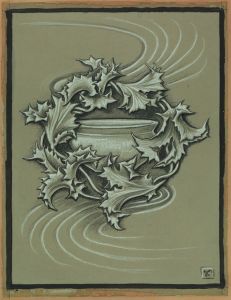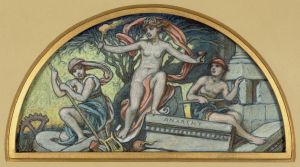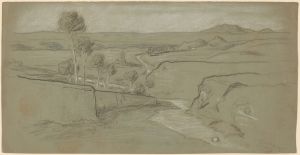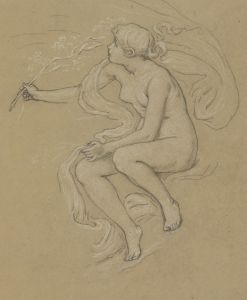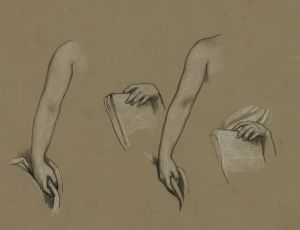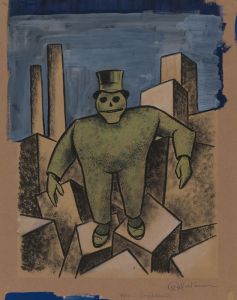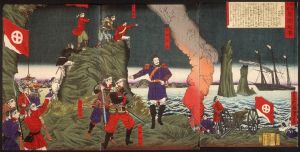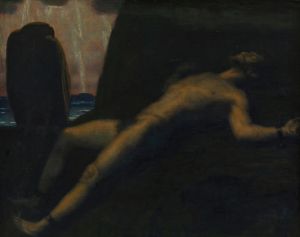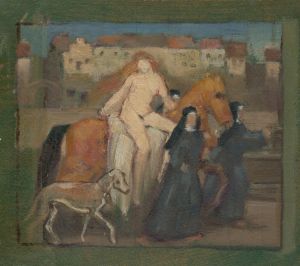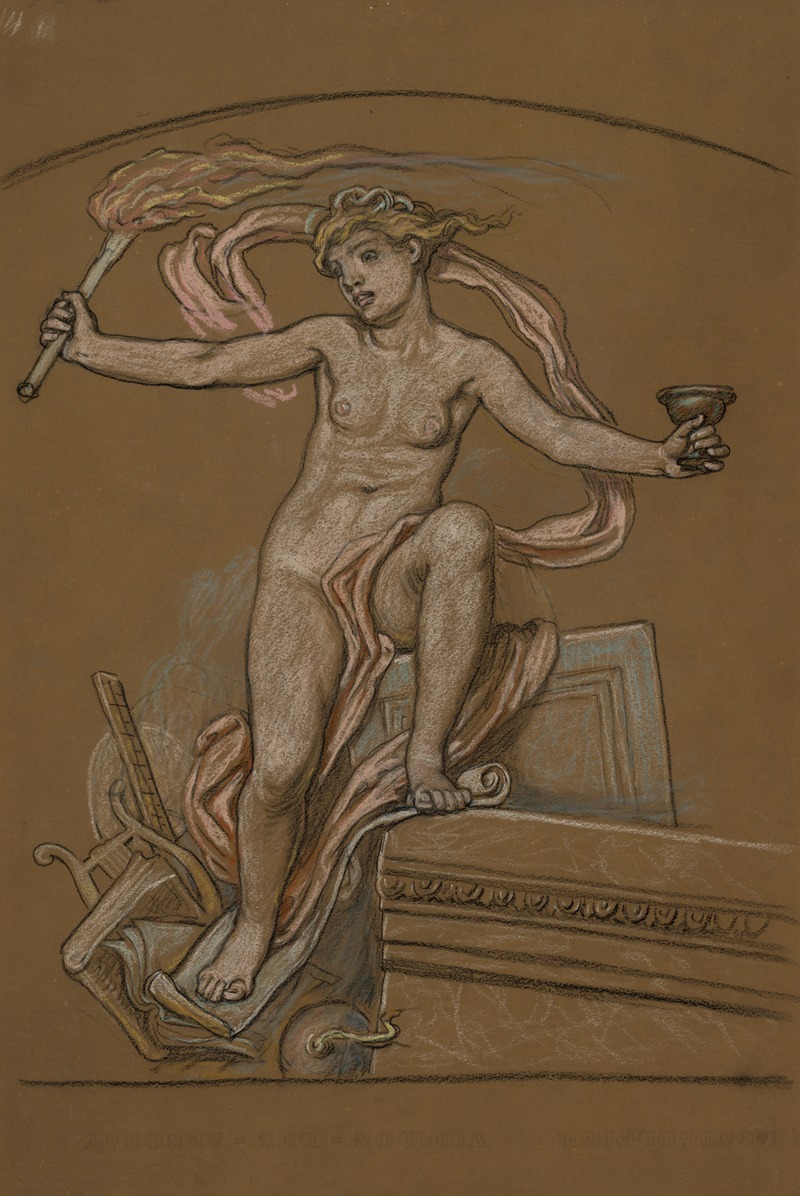
Study for the central figure of Anarchy
A hand-painted replica of Elihu Vedder’s masterpiece Study for the central figure of Anarchy, meticulously crafted by professional artists to capture the true essence of the original. Each piece is created with museum-quality canvas and rare mineral pigments, carefully painted by experienced artists with delicate brushstrokes and rich, layered colors to perfectly recreate the texture of the original artwork. Unlike machine-printed reproductions, this hand-painted version brings the painting to life, infused with the artist’s emotions and skill in every stroke. Whether for personal collection or home decoration, it instantly elevates the artistic atmosphere of any space.
Elihu Vedder was an American symbolist painter, known for his mystical and allegorical works. One of his notable pieces is "Study for the Central Figure of Anarchy," which reflects his interest in themes of chaos and disorder. This study is a preparatory work for a larger composition, showcasing Vedder's process in developing his ideas and figures before committing them to a final piece.
Elihu Vedder was born in New York City in 1836 and spent a significant portion of his career in Italy, where he was influenced by the European art scene and the symbolist movement. His works often explore themes of mythology, dreams, and the human condition, and he was known for his ability to convey complex ideas through his art.
"Study for the Central Figure of Anarchy" is a drawing that captures Vedder's exploration of the concept of anarchy, a theme that was particularly resonant during the late 19th century, a time of social and political upheaval. The study likely served as a preliminary exploration of the figure that would embody the idea of anarchy in a larger, more detailed work. Vedder's studies were crucial to his artistic process, allowing him to experiment with composition, form, and symbolism.
The central figure in this study is depicted with dynamic lines and a sense of movement, which is characteristic of Vedder's style. His use of line and shading creates a sense of depth and intensity, drawing the viewer's attention to the figure's expression and posture. This focus on the central figure suggests that Vedder was interested in personifying abstract concepts, a common practice among symbolist artists who sought to give form to intangible ideas.
Vedder's work, including this study, reflects the broader cultural and artistic trends of his time. The symbolist movement, which emerged in the late 19th century, was characterized by its emphasis on emotion, spirituality, and the exploration of the subconscious. Artists like Vedder used symbolism to express ideas that were not easily conveyed through traditional representational art.
While "Study for the Central Figure of Anarchy" is a lesser-known work compared to some of Vedder's other pieces, it is an important part of his oeuvre, illustrating his methodical approach to art-making and his engagement with the philosophical and social issues of his day. Vedder's ability to blend technical skill with deep conceptual exploration has earned him a lasting place in the history of American art.
Elihu Vedder continued to produce art until his death in 1923, leaving behind a legacy of works that continue to be studied and appreciated for their innovative approach to symbolism and their reflection of the cultural currents of the 19th and early 20th centuries. His studies, such as "Study for the Central Figure of Anarchy," offer insight into his creative process and the development of his ideas, providing a window into the mind of a symbolist artist grappling with the complexities of his time.






